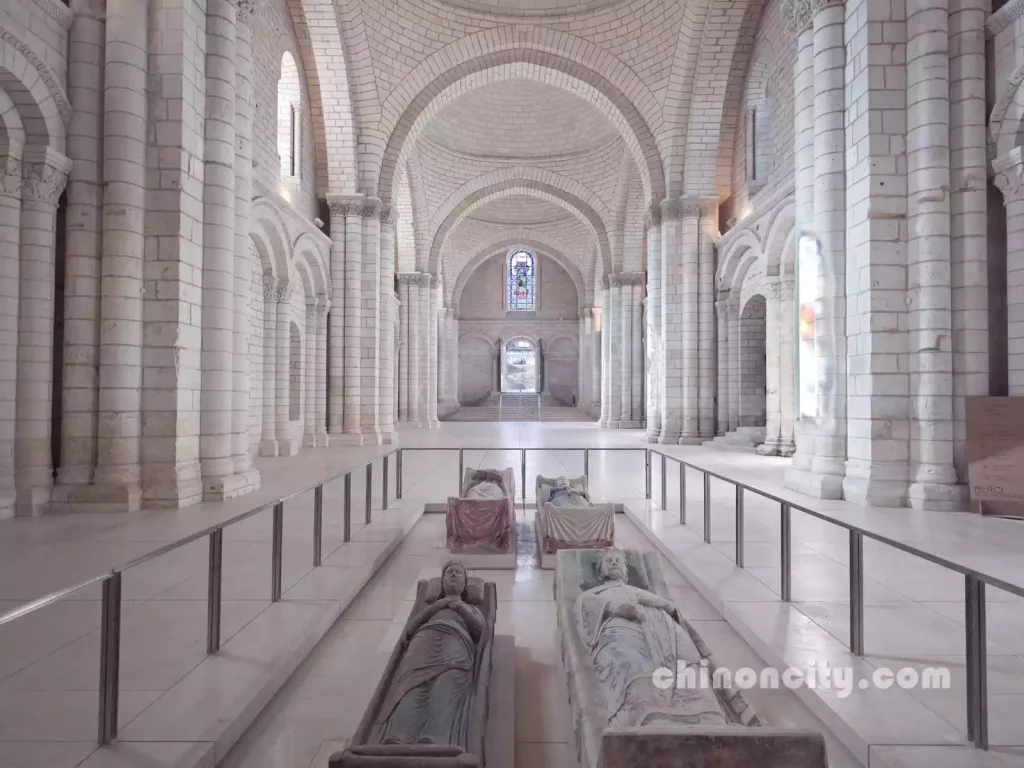Fontevraud Abbey

Fontevraud Abbey is a former medieval monastic complex located in the Loire Valley in France. It was founded in the 12th century by Robert of Arbrissel, a charismatic preacher and hermit, and it quickly grew in importance as one of the largest and most powerful monasteries in Europe.
The abbey was initially established as a community for both men and women, with separate quarters for each. The community was known for its strict discipline and its emphasis on poverty and humility. The abbey also played an important role in the education of the local population, and it became a center of learning and scholarship.
Fontevraud Abbey was also known for its architectural and artistic achievements. The complex is made up of several buildings, including the church of the Holy Trinity, which is one of the largest and most impressive churches of the Romanesque period. The church is adorned with beautiful frescoes and sculptures, and it is a fine example of the architectural style of the time.
The abbey also played an important role in the political and social life of the region. It was a powerful institution, and it played a significant role in the administration and governance of the region. The abbey also served as a royal residence, and it was visited by many of the kings and queens of France, including King Henry II of England and his wife, Eleanor of Aquitaine.
The abbey continued to flourish until the 16th century, when it fell into decline. The last monks left the abbey in 1791, and it was subsequently used as a prison and a hospital.
Today, Fontevraud Abbey is a UNESCO World Heritage Site and it is open to visitors. The complex has been beautifully restored, and visitors can explore the church of the Holy Trinity, the cloisters, the refectory, and the chapter house. The abbey also has a museum, which houses a collection of artifacts and documents related to its history.
In conclusion, Fontevraud Abbey is a former medieval monastic complex that played a significant role in the history of the Loire Valley. It was founded in the 12th century and it quickly grew in importance as one of the largest and most powerful monasteries in Europe. It was known for its strict discipline, its emphasis on poverty and humility, and its architectural and artistic achievements. The abbey played an important role in the political and social life of the region and its architecture and art are still visible today and it is open to visitors.
Plantagenet Familly

Fontevraud Abbey played a significant role in the life of King Richard the Lionheart, also known as Richard Cœur de Lion, who was King of England from 1189 to 1199.
King Richard the Lionheart was a powerful ruler in the region, and he visited the Fontevraud Abbey during the late 12th century. He was deeply impressed by the abbey’s architectural achievements and its spiritual significance. He also established a connection with the abbey, and it became a significant place of pilgrimage for him.
In 1199, King Richard the Lionheart died in the Castle of Chalus-Chabrol, near Limoges, in Aquitaine. His remains were brought to Fontevraud Abbey and he was buried in the choir of the church of the Holy Trinity. His mother, Queen Eleanor of Aquitaine, who had also played a significant role in the region and was also buried at Fontevraud Abbey, next to him. The tomb of the two of them is still visible today and is a popular spot for visitors.
The abbey also played a significant role in the politics of the region, and it was visited by many of the kings and queens of England and France. It served as a royal residence, and it was visited by many of the kings and queens of France, including King Henry II of England and his wife, Eleanor of Aquitaine.